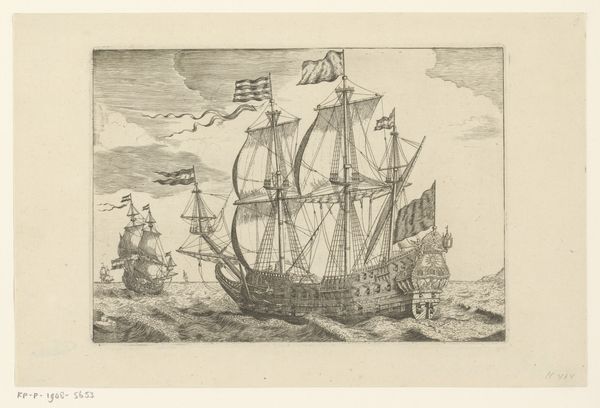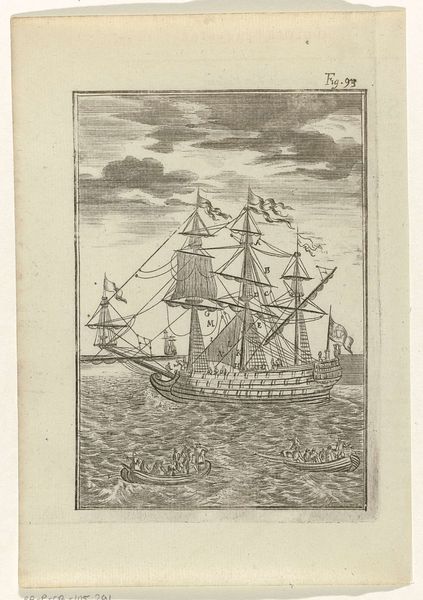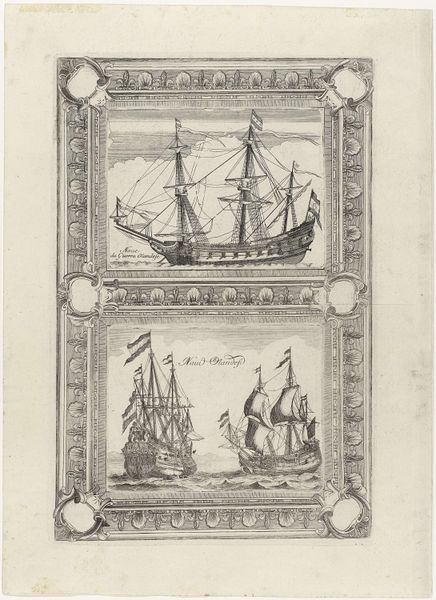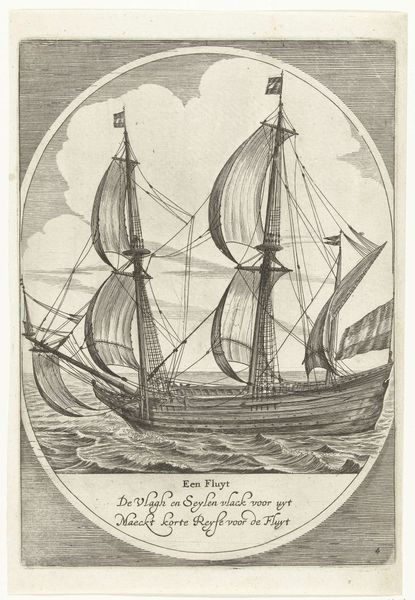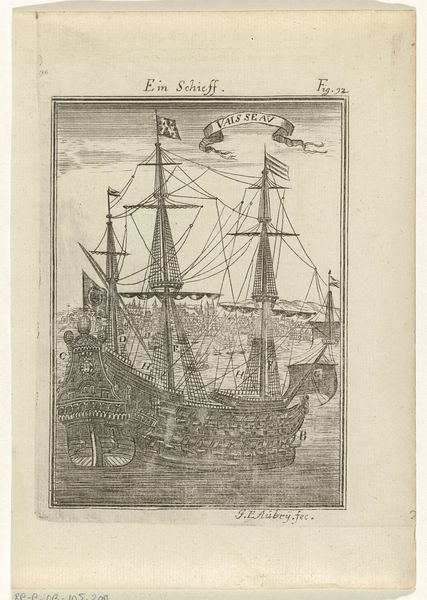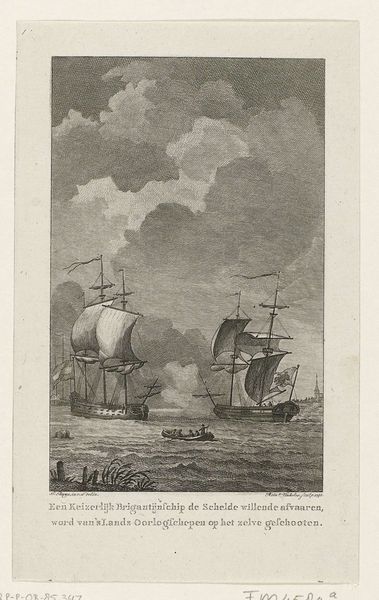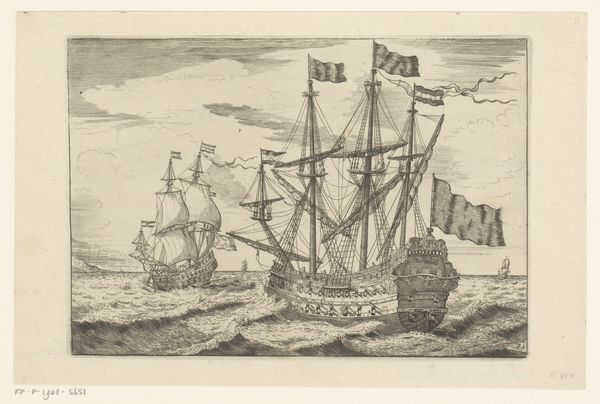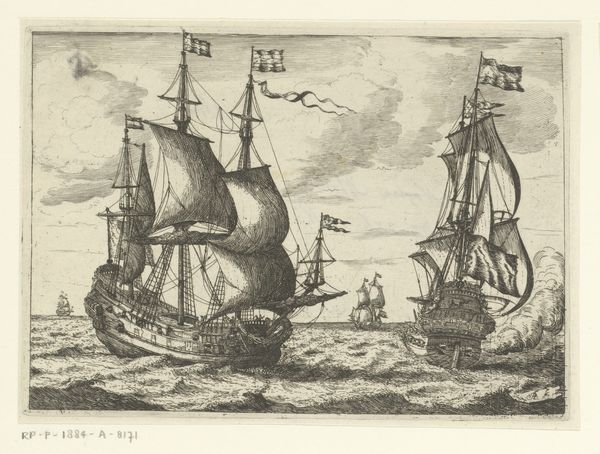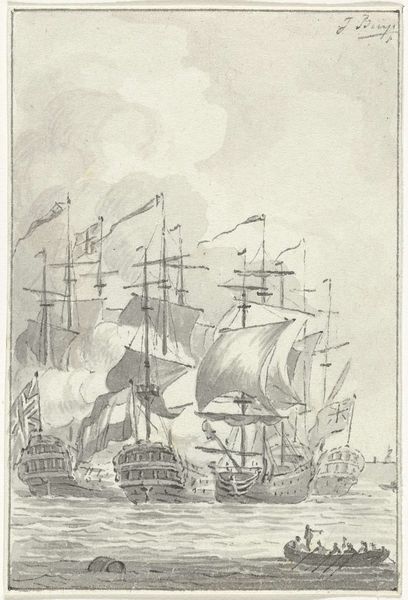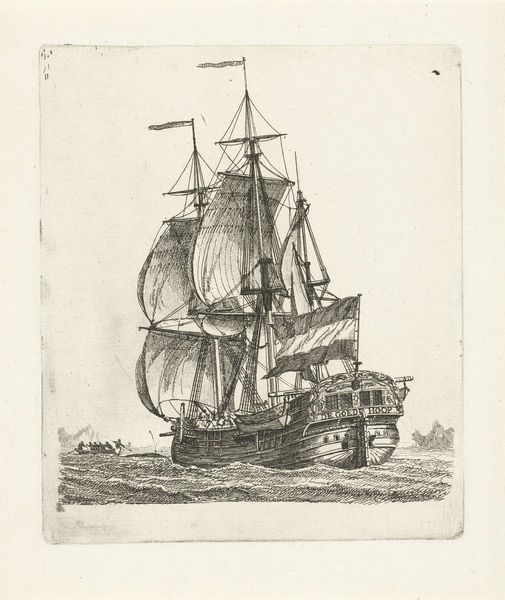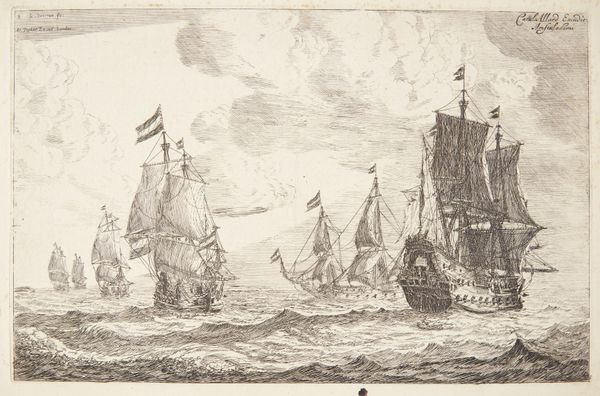
Decoratie bij het huis van jonkvrouw A.J. Heshuizen te Naarden, 1766 1774 - 1776
0:00
0:00
Dimensions: height 187 mm, width 118 mm
Copyright: Rijks Museum: Open Domain
Curator: Immediately, my attention is drawn to the elaborate archway framing the maritime scene. The artist’s choice to present this image through what looks like an architectural structure provides depth and an almost theatrical quality. Editor: Yes, I see that too. Visually, the texture throughout is intense – the rippling water, the billowing sails… the almost frantic energy certainly conveys a sense of maritime dynamism. For our listeners, we are looking at “Decoratie bij het huis van jonkvrouw A.J. Heshuizen te Naarden, 1766” by Noach van der (II) Meer. This etching and engraving on paper dates from 1774-1776 and it is held at the Rijksmuseum. Curator: And thinking of formalism, I immediately appreciate how Van der Meer uses the arch as a compositional device. It’s not merely decorative; it really corrals the wilder energy of the scene, almost containing the subject in a controlled sphere, isn't it? The precise lines also underscore the technical skill inherent in the print medium. Editor: From an art historical perspective, what fascinates me here is context – the image depicts the decoration at the house of a noblewoman, hinting at the socio-political forces that would've shaped not only its commission, but also the cultural reception. We see here an idealized view of Dutch maritime power, that very literally put powerful families like Jonkvrouw Heshuizen on the map. Curator: Precisely – that theatrical framing accentuates how constructed that power actually is, it underlines it, giving this historical scene its sense of spectacle. But it also works internally; notice how the detail and activity are more concentrated centrally, especially toward the ships and boats themselves. Editor: Right. And while formally elegant, let's not forget that this image also functions within the public sphere—celebrating national pride, visually documenting history, but, crucially, creating and supporting narratives that privilege the powerful. That sense of spectacle you mention reflects that reality on the ground. Curator: I am going back to the almost frenetic detail in the print work, that does elevate it to an image with inherent aesthetic and textural intensity and offers a rich field for semiotic interpretations based on design alone. Editor: Indeed, a fascinating work that invites us to think about both historical power and its masterful representation. Curator: It also demonstrates, that close formal scrutiny allows for better unpacking of such issues as propaganda.
Comments
No comments
Be the first to comment and join the conversation on the ultimate creative platform.
